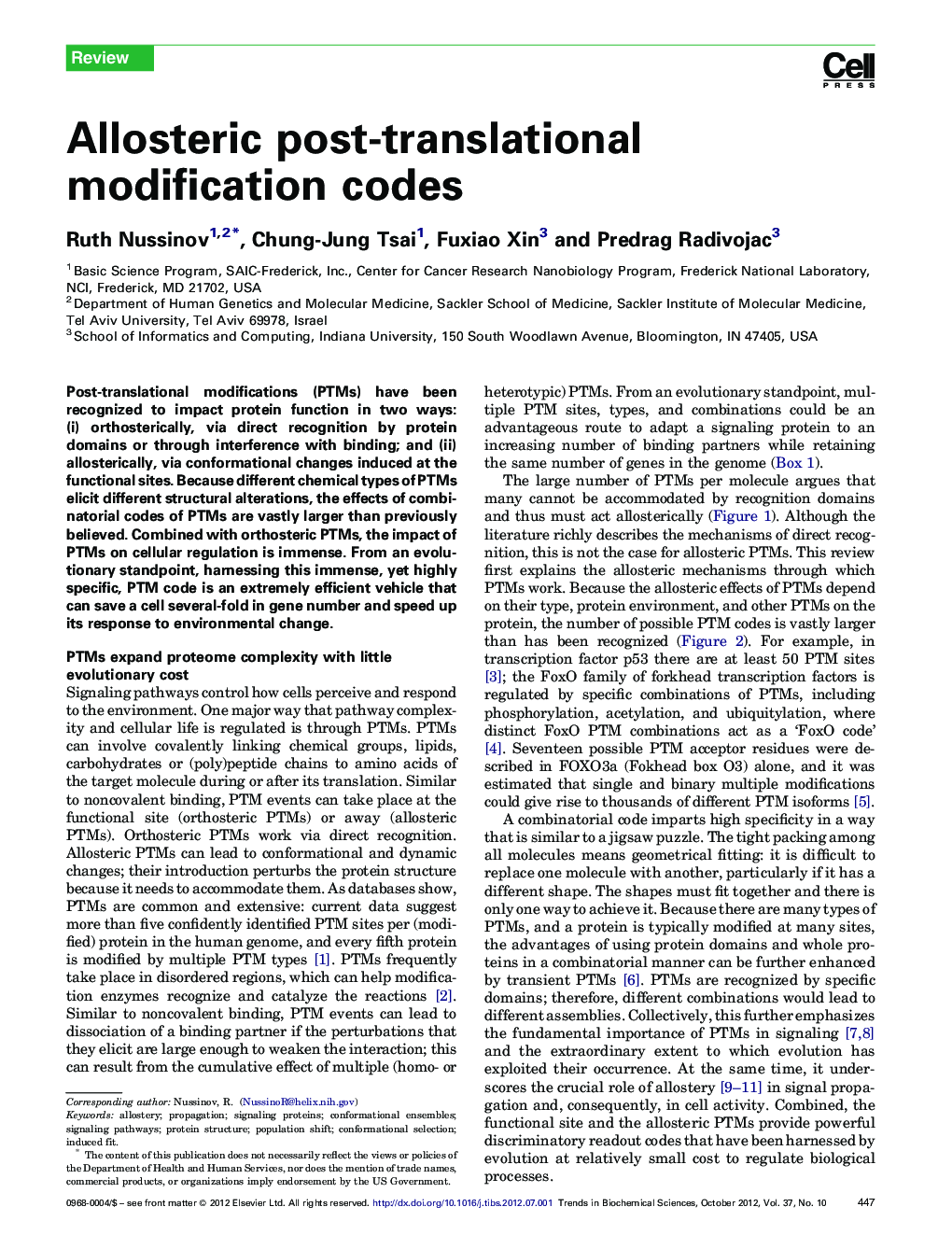| Article ID | Journal | Published Year | Pages | File Type |
|---|---|---|---|---|
| 2030769 | Trends in Biochemical Sciences | 2012 | 9 Pages |
Post-translational modifications (PTMs) have been recognized to impact protein function in two ways: (i) orthosterically, via direct recognition by protein domains or through interference with binding; and (ii) allosterically, via conformational changes induced at the functional sites. Because different chemical types of PTMs elicit different structural alterations, the effects of combinatorial codes of PTMs are vastly larger than previously believed. Combined with orthosteric PTMs, the impact of PTMs on cellular regulation is immense. From an evolutionary standpoint, harnessing this immense, yet highly specific, PTM code is an extremely efficient vehicle that can save a cell several-fold in gene number and speed up its response to environmental change.
